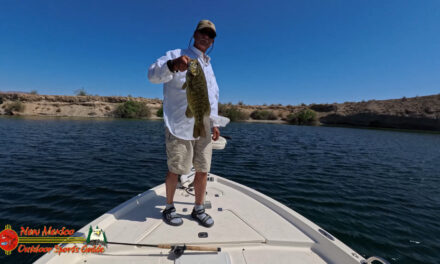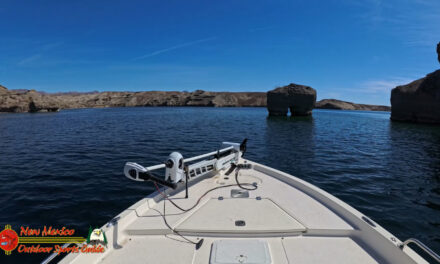Sunshine Kids/Houston F.I.S.H. Tournament – Lake Mohave
The Sunshine Kids held their fishing tournament on Saturday, August 6, at Stow-Away Marina. The Sunshine Kids is a national non-profit organization for children with cancer. They offer a variety of activities to the children, their siblings and parents because they feel that all members of the family are affected by the disease and they all need the opportunities for diversion from reminders of the horrors of the disease.
Jennifer Knerr, the Activities Coordinator of the Houston chapter, says, “through the Sunshine Kids’ activities, parents, siblings and the Sunshine Kids themselves are able to find the support and encouragement they need to continue their fight against cancer from those who truly understand.”
There are over 200 active Sunshine Kids in the Houston area. The numbers change daily with the high mortality rate of the group and new members. Nationwide, the organization boasts over 1000 members.
“All the activities we provide are totally free of charge to the Sunshine Kids and their families,” Knerr says.
One of the activities is an annual fishing tournament and the first place winner in each division is awarded a cash prize.
This year, the Sunshine Kids were fishing for bass and bream. A Junior Division and Senior Division were selected for each type of fish. Fifteen Sunshine Kids competed in this year’s tournament and each participant received a “goody bag” full of special items to remember this day.
The Sunshine Kids and their families are not ordinarily typical anglers or boaters. It was necessary to provide boats for the kids to fish from, and several area guides and other fishing individuals were kind enough to donate their boats for the tournament. The organization wishes to extend a hearty “thanks” to Wayne Vinton, Tom O’Connor, Jeff Goetzman, Steve Smith, Billy Mills, Tex Bonin, Keith Kocurek, Mike Schneider, Mitch Lowman, Dave Banta, John T. Gillis, Mickey Geisler, Marshall Brown, Jack Edwards, Bill Cannan, Gary Watts and Bob Driggers for their kind support in donating their boats to this tournament.
“Our philosophy is living life to the fullest,” Knerr says. “We try to give the families a break from hospitals and treatments by giving them the opportunity to just have fun and be a kid.”
Houston F.I.S.H. (Femmes In Search of Hawgs), a local organization of women anglers, sponsored this program. This group was formed in 1978 and was one of the first clubs affiliated with Bass ‘n’ Gals, a national organization of fisherwomen. 1994 is the 13th year that Houston F.I.S.H. has sponsored the Sunshine Kids tournament and this is the second year it has been held at Stow-Away Marina..
The Sunshine Kids tournament was followed by a Take A Kid Fishing tournament organized by Houston F.I.S.H. Any child that wants to fish but may not have access to a fishing boat or fishing tackle can participate in this program nationwide. This portion of the day’s tournament was dedicated to Edna Mills, a Conroe resident and a former member of both the local group and Bass ‘n’ Gals who died in a boating accident recently on Lake Conroe.
B. J. Nix was the tournament director for this Take A Kid Fishing tournament. She had 40 child/adult teams. Children are paired up with parents or anglers who want to donate their boats to the event. Everyone had a great time on this beautiful, sunny day.
All the bream and catfish caught in both tournaments was donated by Houston F.I.S.H. to Conroe area charities. The average weight of a day’s catch of bream and catfish is 200-250 lbs. The bass catches are released after being weighed and a photo is taken.
After the tournament, Houston F.I.S.H. held an auction featuring merchandise like a custom-made gun cabinet valued at $400 and several fishing rods with $60-$70 cash value each. Fishing guide trips, both freshwater and sal*****er, and a variety of artwork and jewelry were also auctioned.
The total proceeds from the tournament and the auction came to over $5000 for Houston F.I.S.H., including a cash donation of $2000 from Budweiser.
It’s great to see this kind of participation on Lake Conroe, especially for such a worthy cause. Cheryl Boen, President of Houston F.I.S.H., wishes to thank all those involved in the tournament for making it a terrific success.
The Houston F.I.S.H. organization offers women an opportunity to learn to fish and operate a boat . The group gets together on the first Monday of every month, unless that day is a holiday, in which case the meeting is
held on the first Tuesday.(September’s meeting is planned for September 6.) It also offers female anglers a support group and an opportunity to fish from a boat, even if members don’t own a boat.
About half the group owns boats and they pair up with other members who don’t own boats. Tournaments are held once a month at area lakes for members and potential members. Cheryl Boen told me that women are allowed to participate in one tournament before officially joining the group.
For more information on the Houston F.I.S.H. organization, please call Cheryl Boen at
(713) 466-1893 or Jacquetta Owens at (713) 367-4499. – Lake Mohave





